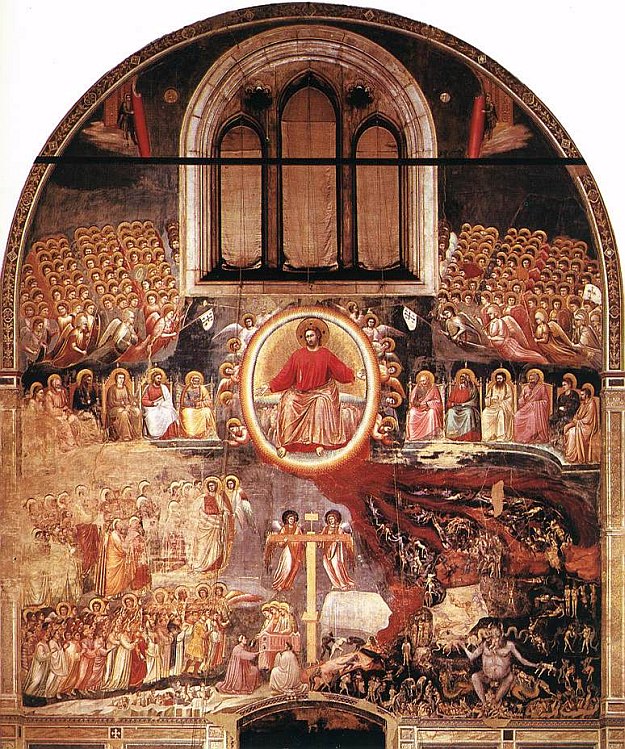 Whether you spell it ‘Judgement’ or ‘Judgment’, this famous fresco is perhaps one of the Italian artist Giotto’s most well-known and characteristic works. It can be found in the Arena Chapel, known by many as the Cappella Scrovegni a Padova.
Whether you spell it ‘Judgement’ or ‘Judgment’, this famous fresco is perhaps one of the Italian artist Giotto’s most well-known and characteristic works. It can be found in the Arena Chapel, known by many as the Cappella Scrovegni a Padova.
Enrico Scrovegni feared for his father’s soul. The infamous moneylender had even been featured in Dante’s seventh level of Hell. Enrico purchased land near the Roman Amphitheater to build a chapel dedicated to the Virgin Annunciate in hopes of earning salvation for his father and himself. There are 37 scenes from Christ’s life depicted on the walls of the chapel and with the exception of this one, illustrate passages from the Bible.
In the Last Judgement, we have a scene that only occurred in the mind of the artist and his patron. In this fresco, Enrico is presenting to the Madonna a scale replica of the Cappella Scrovegni (bottom, center) as Christ looks on from up in Heaven. From beautiful angels to other heavenly bodies to the inhabitants of hell in the bottom right corner, this masterpiece appears across the full width of the chapel on the back of the entrance wall. (The doorway to the Arena Chapel appears at the bottom of the photograph.)
Giotto (ca.1266-1337) was most well-known for his innovations in depicting light and substance. His works are characterized by a revolutionary sculptural, three-dimensional painting style which this work is considered by many to exemplify that style. To learn more about how Giotto changed the world of art, began leading Italy out of the Middle Ages and into the Renaissance and to view more works by the artist, please visit our biography of Giotto.